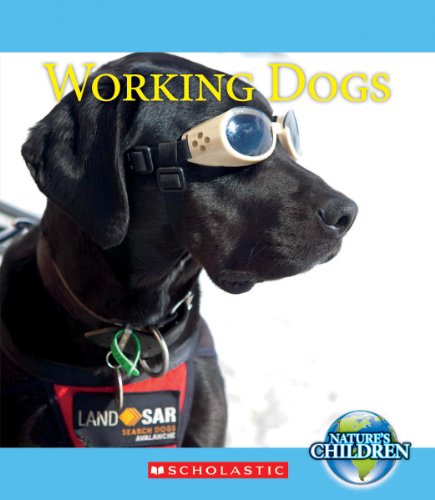-
King Cobras
Katie Marsico
Paperback (Childrens Pr, Jan. 15, 2013)Discover some of the most fascinating animals in the world with the Nature's Children series. Readers will discover how these creatures survive in the wild, how they raise their young, and how they are related to other species. Each title also raises important ideas about conservation by examining the animal's current status and explaining the ways humans have affected it throughout the years. Key Features: Discover where the animals live with the habitat map Informative text offers a clear view of the animals' role in nature Glossaries define important vocabulary specific to each book Fact file provides an easy reference for vital information about the animals' classifi cation and basic habits Additional content for further learning on this subject available at www.factsfornow.scholastic.com Q
Q
-
Black Bears
Mara Grunbaum
Paperback (Children's Press, Feb. 1, 2019)Find out why some black bears actually have white fur and other fascinating facts about the most common bear in the world.Nature's Children series provides young readers (Ages 8-10) with fascinating information about the planet's most incredible wildlife species. Each title offers a complete picture of the animal- from birth to adulthood- and describes its place in our world, including how humans impact it and its environment. Did you know that black bears are the most common bears on Earth-but that some black bears actually have white fur? Be surprised and awed by every page of this captivating book! S
S
-
Rhinoceroses
Stephanie Drimmer
Library Binding (Children's Press, Feb. 1, 2018)Did you know that rhino calves can weigh up to 100 pounds?!Nature's Children series provides young readers (Ages 8-10) with fascinating information about the planet's most incredible wildlife species. Each title offers a complete picture of the animal- from birth to adulthood- and describes its place in our world, including how humans impact it and its environment. Did you know that rhinos communicate by squealing, snorting, and even mooing. These huge herbivores are also at risk due to illegal hunting. S
S
-
Killer Whales
Charnan Simon, Ariel Kazunas
Library Binding (Childrens Pr, Sept. 1, 2012)Introduces killer whales, discussing their physical characteristics, diet, habitats, and status as an endangered species. Q
Q
-
Rhinoceroses
Stephanie Drimmer
Paperback (Children's Press, Feb. 1, 2018)Did you know that rhino calves can weigh up to 100 pounds?!Nature's Children series provides young readers (Ages 8-10) with fascinating information about the planet's most incredible wildlife species. Each title offers a complete picture of the animal- from birth to adulthood- and describes its place in our world, including how humans impact it and its environment. Did you know that rhinos communicate by squealing, snorting, and even mooing. These huge herbivores are also at risk due to illegal hunting. S
S
-
Jellyfish
Katie Marsico
Library Binding (Children's Press, Sept. 1, 2014)Discover why swimmers have come to fear these strange, ancient animals.Nature's Children series provides young readers (Ages 8-10) with fascinating information about the planet's most incredible wildlife species. Each title offers a complete picture of the animal- from birth to adulthood- and describes its place in our world, including how humans impact it and its environment. Jellyfish are among the most fascinating animals in Earth's oceans. Beneath the waves, these soft, ghostlike creatures drift through the water collecting prey with their dangling tentacles. Readers will discover how a jellyfish's body is structured, how jellyfish grow and reproduces, and how scientists classify jellyfish into different groups. S
S
-
Hedgehogs
Josh Gregory
Library Binding (Children's Press, Sept. 1, 2015)Did you know that the name for a baby hedgehog is a hoglet?Covered in pointy quills, hedgehogs are able to defend themselves from a wide range of potential predators. Readers will find out how these fascinating animals use their senses to hunt prey of their own and what their daily life is like. They will also learn how hedgehogs reproduce, how they interact with each other, and how interaction with humans is affecting them today. S
S
-
Working Dogs
Josh Gregory
Library Binding (Children's Press, March 1, 2013)Discover how working dogs are bred and trained and how these hardworking canines find happy homes when it comes time to retire.Nature's Children series provides young readers (Ages 8-10) with fascinating information about the planet's most incredible wildlife species. Each title offers a complete picture of the animal- from birth to adulthood- and describes its place in our world, including how humans impact it and its environment. Humans and dogs have shared a close relationship for thousands of years. Today, there are around 600 million domestic dogs living throughout the world. Many of them are trained to perform important tasks. These working dogs pull sleds, assist the disabled, protect us from harm, and search for lost people. They work alongside farmers, soldiers, and hunters. S
S
-
Pythons
Lucia Raatma
Paperback (Childrens Pr, Sept. 1, 2012)With several species among the largest snakes in the world, pythons are well known for their strength and beauty. Readers will learn how these powerful predators use constriction to crush their prey, why their coloring makes them better hunters, and how they reproduce. They will also find out how illegal hunting and habitat destruction have harmed some python species. R
R


